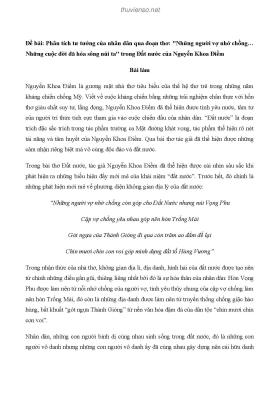Part 2 book "Wiggs's veterinary dentistry - Principles and practice" includes content: Oral surgery – general, oral surgery – fracture and trauma repair, oral surgery – oral and maxillofacial tumors, basic endodontic therapy, advanced endodontic therapy, restorative dentistry, crowns and prosthodontics, occlusion and orthodontics, domestic feline oral and dental diseases, small mammal oral and dental diseases, exotic animals oral and dental diseases.
Nội dung trích xuất từ tài liệu:
Ebook Wiggs's veterinary dentistry - Principles and practice (2/E): Part 2
247
VetBooks.ir
12
Oral Surgery – General
Heidi B. Lobprise
Main Street Veterinary Dental Clinic, Flower Mound, TX, USA
12.1 Introduction bundles for ligation and non‐crushing forceps can secure
tissues such as the tongue for temporary hemorrhage
Tissues other than teeth, bone, and periodontal structures control during the procedure [1].
require surgical intervention at times. Basic surgical Preference for suture material may vary, but typically
skills and rules for other body systems are often applica- an absorbable product of 4‐0 to –5‐0 size with a swaged‐
ble, with some modifications. A good aseptic technique on needle works best. The type and size of suture can be
in the clean‐contaminated environment of the oral cavity adjusted according to the size of the patient, condition,
can be challenging, but should be followed when possible. and thickness of the tissue and goal of the procedure.
Specific aspects from tissue healing to instrumentation For extractions, synthetic absorbable material is recom-
and techniques are covered in greater detail in other mended, and products that will stay intact longer
texts that are good resources (see Suggested Reading). (polyglacton 910 or polyglycolic acid) are preferred with
oronasal fistula repair and other complicated proce-
dures. In thin, friable tissue, a tapered needle may be pre-
12.1.1 Basic Surgical Principles
ferred while a reverse cutting needle may be needed for
Tissues of the oral cavity tend to heal rapidly due to thicker mucosa and gingiva.
s
everal factors, including more extensive monocytic A suture technique may also be adjusted according to
phagocytic activity and epithelialization (compared to need, often using a simple interrupted pattern and
skin), warmer temperatures, high metabolic activity, specialized patterns where indicated. Sutures should
higher mitotic rate, and an excellent blood supply [1]. incorporate adequate bites of tissue and be secured
The oral cavity’s excellent blood supply can prove to snugly to resist loosening due to movement of the tongue
be both a benefit and a hindrance to surgery: while and lips. A good rule of thumb to follow is the “3 × 3 × 3”
hemostasis must be provided for proper visualization, rule, where the sutures are 3 mm apart, 3 mm from the
preservation of major vessels is essential. The most incisional border, and the ends of the sutures are cut
significant vessels and nerves typically encountered 3 mm long. For oral surgery, five to six throws should
are the maxillary and palatine structures of the max- complete the knot due to the moist environment and
illa, and the inferior alveolar neurovascular bundle of tongue movement. Interdental sutures should allow for
the mandible. Where possible, vascular structures good approximation of tissues, and will keep the gingiva
should be preserved, even incorporated into retained securely against the tooth. Position knots away from the
tissue. If resection is necessary, then vessel identifica- incision line to prevent an accumulation of debris in the
tion, ligation, and hemorrhage control is vital. area. It is best not to have an incision line over a defect,
Smaller scalpel blades are often an advantage in the but, most importantly, a suture line should never be
restrictive spaces of the oral cavity. Tissue handling placed under tension. Any suture line with tension should
instruments (forceps, scissors) should be selected to be expected to fail. It is also vital to provide a fresh edge
provide delicate handling of the gingiva and mucosa, or surface for adequate healing. Any chronic area or
particularly when they are friable. Smaller, curved intact epithelial surface should be debrided to provide a
Metzenbaum scissors with serrated blades and delicate fresh bleeding surface to promote rapid healing.
Adson 1X2 rat‐tooth thumb forceps can be useful [2]. Hard tissues also require proper handling, as it is possible
Right‐angled forceps can be helpful to isolate vascular to injure or burn the bone surface with inappropriate use
Wig ...
